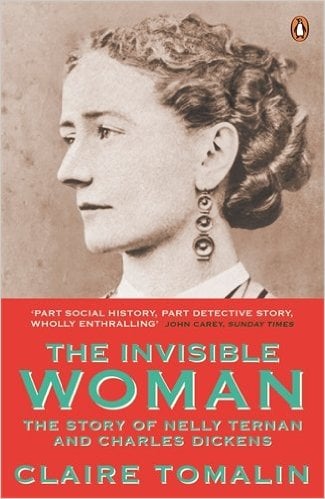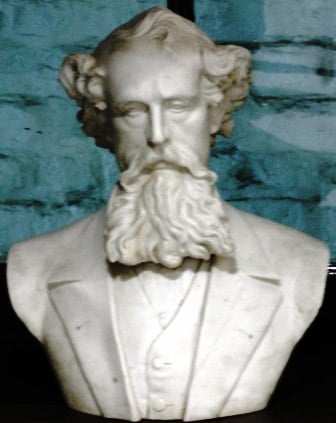In addition to our night time Jack the Ripper guided tour we also offer a range of walks around the London of Charles Dickens.
Dickens was, and remains, a fascinating character, and the story of how he rose from humble beginnings, not to mention a traumatic and, at times, poverty stricken childhood, to become the second most famous Victorian, second only to Queen Victoria herself, is truly inspirational.
He was, in every sense, a self made man, and a true genius when it came to “spinning” information about himself in order to present himself in the best possible light to his adoring public.
In short, he understood the value of publicity and managed his own publicity with an adeptness that would put many a modern spin doctor to shame.

DICKENS AND THE INVISIBLE WOMAN
One aspect of his life that people often find fascinating is the period in the late 1850’s when his marriage to his wife, Catherine, broke down and he went off with a younger woman, 27 years his junior, by the name of Ellen – “Nellie” to her family – Ternan.
For much of the next twelve years, Ellen Ternan would all but vanish from public view as Dickens struggled to keep their relationship a closely guarded secret. Indeed, such was his determination to hide what was going on from his adoring public – who, after all, had come to view him as the very personification of Christian house, hearth and home – that Ellen effectively became, to use the title of Claire Tomalin’s wonderfully insightful book on the issue, The Invisible Woman.
Dickens first encountered her when he was acting in the lead role in the play The Frozen Deep, on the writing of which he had collaborated with his great friend Wilkie Collins.
He had asked a friend of his, Alfred Wigan, if he could suggest any actresses who could play the female roles when the play transferred from London to The Free Trade Hall, in Manchester.
Wigan came up trumps and suggested a family of actresses, headed by the matriarch Frances Ternan, a respected Shakespearean actress in her own right, who had three daughters, Fanny, Maria and Ellen.
A CRAMPED AND UNWHOLESOME RESIDENCE
Dickens duly went to visit them at Park Cottage in Northampton Park, Islington, a somewhat cramped residence that still stands today.

Standing outside the square, grey cottage, its doesn’t take a great leap of the imagination to picture Charles Dickens arriving here in August 1857 for his meeting with the Ternan family.
Being used to the luxury of the lifestyle his talent, and subsequent fame, had brought him, Dickens found himself singularly unimpressed with the cramped conditions he found inside and was quick to describe the little cottage that the Ternans called home as being “unhealthy and unwholesome.”
He was, however, impressed by the family of women – and, as it would transpire singularly impressed with the youngest daughter, Ellen.
THE SEPARATION FROM HIS WIFE
It was shortly after meeting her that he separated from his wife and, thereafter, he and Ellen became lovers and remained so until his death on June 1870.
Ever the control freak, Dickens attempted to blame the break up of his marriage on his wife, Catherine, going so far as to attack her in print in several newspapers. Many of his friends were appalled by the way he treated her and, as a result, Dickens ended many of his friendships around this time.
From that point on Charles Dickens, private life became shrouded in mystery, despite various moments – such as The Staplehurst Railway Disaster – when fate intervened to almost make public what has been referred to as the “great Charles Dickens scandal.”
There are rumours that, it must be said, have never been 100% confirmed, that he and “Nellie” had a child, but it died in infancy.
A MORE HUMAN SIDE TO DICKENS
This period of his life makes for a fascinating study of Charles Dickens the man since, in many ways, it shows him a more human side of his character, as opposed the iconic titan of literature that he is more often seen and depicted as.

Yes, he could have handled the marriage breakdown better than he did. Yes, he treated his wife appallingly, of that there can be no doubt.
But, at the end of the day, it is in this period of his life that we get tiny glimpses of some of the demons that drove Dickens on.
If you would like to read more about Charles Dickens and Ellen Ternan, I would heartily recommend Claire Tomalin’s terrific book The Invisible Woman. You can get it on Amazon by clicking here.
JOIN A CHARLES DICKENS WALK
If you would care to learn more about Dickens the man, then you can join me for a Charles Dickens walking tour, that features a great deal of information about his, often complicated, private life!
